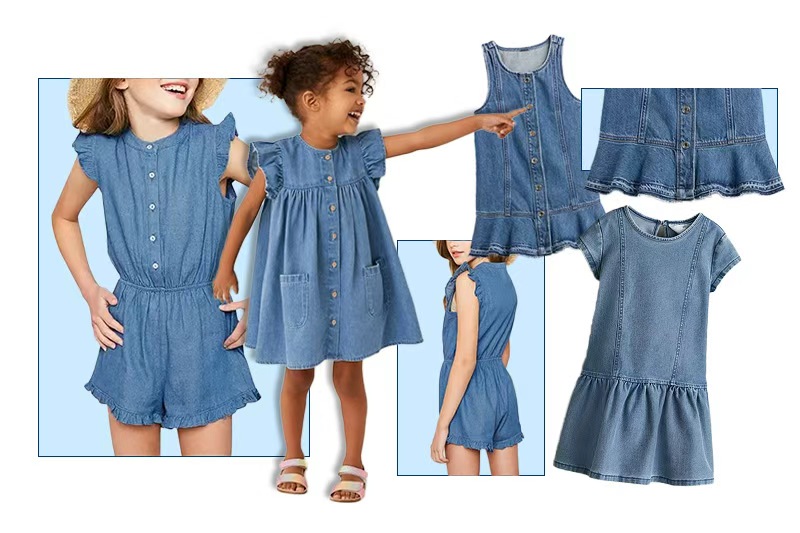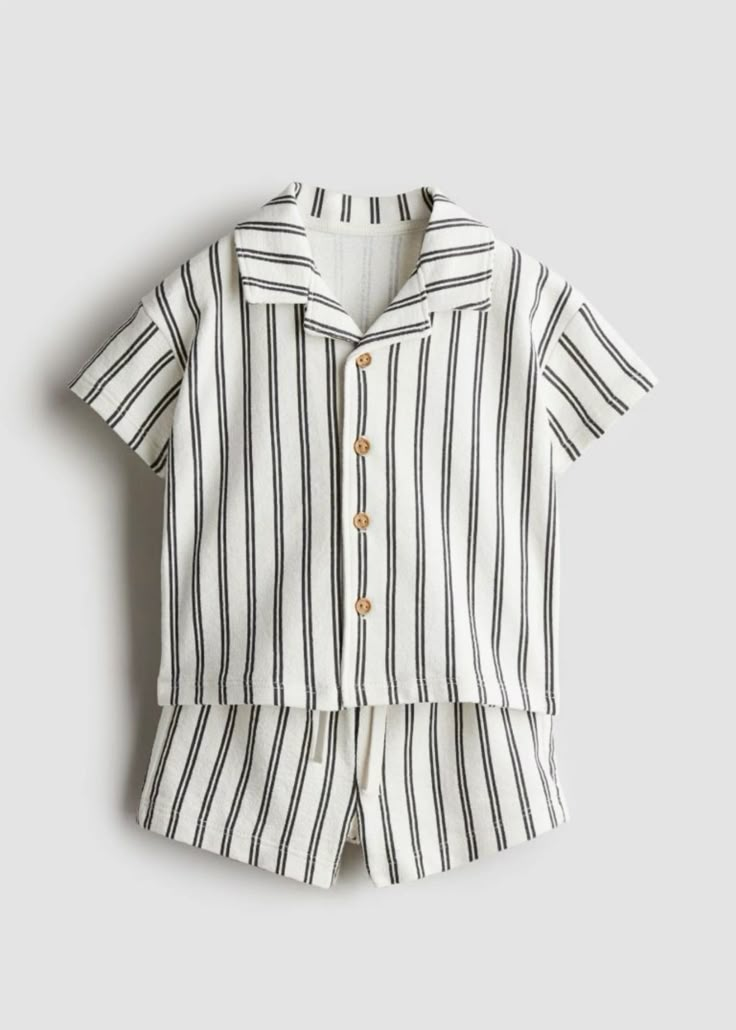Choosing the right fabric weight for children's T-shirts is key to ensuring comfort and durability.
Understanding GSM in children's T-shirts is essential for making informed fabric choices. Typically, T-shirts with 180-220 GSM provide excellent comfort and durability for daily play. Heavier fabrics (above 220 GSM) offer extra warmth, ideal for cooler seasons like autumn, while lighter fabrics (below 180 GSM) ensure maximum breathability in tropical climates. This knowledge allows brands to design clothing that fits the specific needs of their target market, balancing style, comfort, and practicality.
Let’s explore how GSM influences fabric choice, and why selecting the right weight matters for different climates and seasons.
What Does GSM Mean for Children's T-Shirts?
GSM, or grams per square meter, is a standard metric for measuring fabric weight and quality. It tells us how dense and durable the material is, which in turn affects how the garment feels.
GSM indicates the fabric's weight and density. A higher GSM means a thicker, more durable fabric, while a lower GSM denotes a lighter, more breathable material. For children's T-shirts, the typical range of 180-220 GSM offers a balance between comfort and longevity.
When we talk about GSM, we're referring to a metric that defines the weight of the fabric by calculating how many grams one square meter of the fabric weighs. This measure is essential in the clothing industry because it directly influences the look, feel, and durability of a garment. For children's T-shirts, a fabric weight between 180 and 220 GSM is considered ideal. This range provides enough heft to ensure durability through active play, yet remains soft and comfortable against a child’s delicate skin.
For example, a 200 GSM fabric is robust enough to handle frequent washes and rough use, making it perfect for everyday wear. It strikes a balance: not too heavy to cause discomfort during warm weather, and not too light to feel flimsy in cooler seasons. In contrast, fabrics with a GSM below 180 are generally lighter, making them excellent for hot, tropical climates where breathability is crucial. These lighter fabrics help keep children cool and comfortable, especially during outdoor activities under the scorching sun.
On the other end of the spectrum, fabrics exceeding 220 GSM are considered heavyweight. These are often chosen for their extra durability and warmth. In regions with cooler weather or during autumn, a heavier T-shirt can provide the necessary insulation. However, the trade-off is that they might be less breathable, which can be uncomfortable in warmer settings.
Understanding GSM also helps in comparing different types of materials. For instance, organic cotton and bamboo fabrics, popular choices in children’s clothing, can both fall within this 180-220 GSM range. Organic cotton is widely appreciated for its softness and hypoallergenic properties, making it an excellent option for kids with sensitive skin. Bamboo fabric, on the other hand, is known for its natural antibacterial qualities and moisture-wicking capabilities, ensuring that children stay dry and comfortable.
Manufacturers use GSM as a benchmark not only for quality control but also to meet consumer expectations. When a buyer orders a T-shirt with a specified GSM, they’re assured of a certain level of durability and comfort. This metric helps avoid miscommunication and ensures that the final product aligns with the brand’s standards.
Moreover, knowing GSM aids in determining the cost and production process. Heavier fabrics typically require more material and might incur higher production costs. Conversely, lighter fabrics might reduce costs but could compromise on durability if not chosen wisely. For brands targeting markets in North America, Australia, and Europe, where consumers are sensitive to both quality and price, maintaining this balance is critical.
Understanding GSM and its impact on fabric properties empowers brands to make informed decisions that benefit both the manufacturer and the end consumer. It’s a simple yet powerful tool that bridges the gap between design vision and practical functionality.
Why Are 180-220 GSM T-Shirts the Most Common Choice?
This fabric weight range is popular because it meets the needs of both children and parents, offering a perfect blend of durability and comfort.
Children's T-shirts in the 180-220 GSM range provide just the right balance: they’re sturdy enough for active play and soft enough for everyday comfort. This range is versatile, ideal for various weather conditions, and preferred by many brands for its reliability.
In the world of children’s clothing, selecting a fabric weight within the 180-220 GSM range is a common practice because it offers a versatile solution. This range has been honed by years of experience and feedback from parents who value both comfort and durability. T-shirts within this weight bracket are robust enough to endure frequent washing and vigorous play, which are typical in a child’s life, while still maintaining a lightweight feel that ensures comfort throughout the day.
Moreover, T-shirts in this weight range perform well across different seasons. In cooler months, a 220 GSM T-shirt offers extra warmth without becoming too heavy, making it a perfect layering piece. In contrast, in milder climates or during transitional seasons like spring and fall, a 180 GSM shirt is light enough to keep children comfortable without overheating. This adaptability is why many established brands stick to this specification.
Ultimately, the choice of fabric weight in this range helps build trust with consumers. When parents know that a brand consistently offers durable yet comfortable clothing, it becomes easier for them to become repeat customers. This trust is essential in a competitive market where quality and reliability are key differentiators.
When Should Heavier T-Shirts (Above 220 GSM) Be Used?
While 180-220 GSM is common for everyday wear, there are times when a heavier fabric is beneficial, particularly in cooler climates.
Heavier T-shirts, above 220 GSM, provide extra warmth and durability, making them ideal for autumn or cooler environments. They offer a more substantial feel and can serve as a protective layer, though they might be less suitable for hot climates.
Heavier T-shirts, with fabric weights exceeding 220 GSM, are designed for durability and added warmth. In regions where the temperature drops during autumn or winter, these fabrics can provide the extra insulation that children need. While they are not as commonly used for everyday wear in warmer climates, they offer several advantages in cooler weather.
For instance, a T-shirt with a GSM of 240 or higher feels more substantial, providing a snug fit that helps trap body heat. This makes it an excellent choice for early mornings or chilly evenings. Additionally, heavier fabrics are typically more resistant to wear and tear. They can better withstand rough play and frequent washes, which is essential for maintaining the longevity of children’s clothing.
Moreover, heavier fabrics often signal quality. They tend to have a more luxurious feel and can be marketed as premium products. This can be a significant advantage in a competitive market where consumers are willing to pay a bit more for added durability and warmth.
Heavier T-shirts also open opportunities for layered looks. They can serve as an excellent base for outfits that transition from cool to warm environments throughout the day. For instance, a heavier T-shirt worn under a light jacket can provide just the right amount of warmth during outdoor activities while remaining comfortable indoors.
By incorporating a mix of fabric weights in a collection, brands can cater to a wider audience and address seasonal variations more effectively. Offering options for both cooler and warmer climates ensures that every customer finds the perfect fit for their needs.
What Are the Advantages of Lighter T-Shirts (Below 180 GSM) for Tropical Climates?
In consistently hot, tropical climates, lighter T-shirts offer superior comfort by enhancing breathability and reducing heat retention.
Lighter fabrics below 180 GSM are perfect for tropical regions as they provide excellent breathability and comfort, ensuring children stay cool during the hottest days. They might be less durable but are ideal for regions where lightweight clothing is essential.
Lighter T-shirts, typically below 180 GSM, are designed with breathability and comfort in mind, especially in tropical climates where high temperatures and humidity prevail. In such environments, every gram matters, and a lighter fabric ensures that children can move freely and stay cool, even under the scorching sun.
These T-shirts are usually made from ultra-light materials that feel soft against the skin and allow for maximum air circulation. The reduced weight helps minimize heat retention, making them ideal for long days at the playground or school. However, while their lightness is an advantage in hot weather, it can sometimes come at the cost of durability. Lighter fabrics might wear out faster under constant use and frequent washing, so brands need to balance these factors carefully.
From a production perspective, using lighter fabrics can also mean faster drying times and easier maintenance for parents, adding another layer of convenience. However, it is important for brands to ensure that these fabrics are still strong enough to withstand the active lifestyles of children. Incorporating a blend of fibers or using advanced knitting techniques can help improve the durability of lighter T-shirts without sacrificing comfort.
Marketing lighter T-shirts in tropical climates involves highlighting their breathability and ease of care. Brands can create engaging content that shows kids enjoying outdoor activities in the heat, emphasizing the garment's ability to keep them cool and comfortable. For instance, sharing customer testimonials or behind-the-scenes looks at the fabric's testing process can build trust and authenticity.
Ultimately, the choice between heavier and lighter fabrics depends on the target market and seasonal demands. Lighter T-shirts offer unmatched comfort in tropical conditions, making them an indispensable part of a well-rounded collection for regions with consistently high temperatures.
Conclusion
Understanding fabric weight in GSM is vital for creating comfortable and durable children's T-shirts. By choosing the right weight—whether 180-220 GSM for everyday wear, heavier for autumn warmth, or lighter for tropical climates—brands can meet diverse consumer needs while maintaining quality and style.


